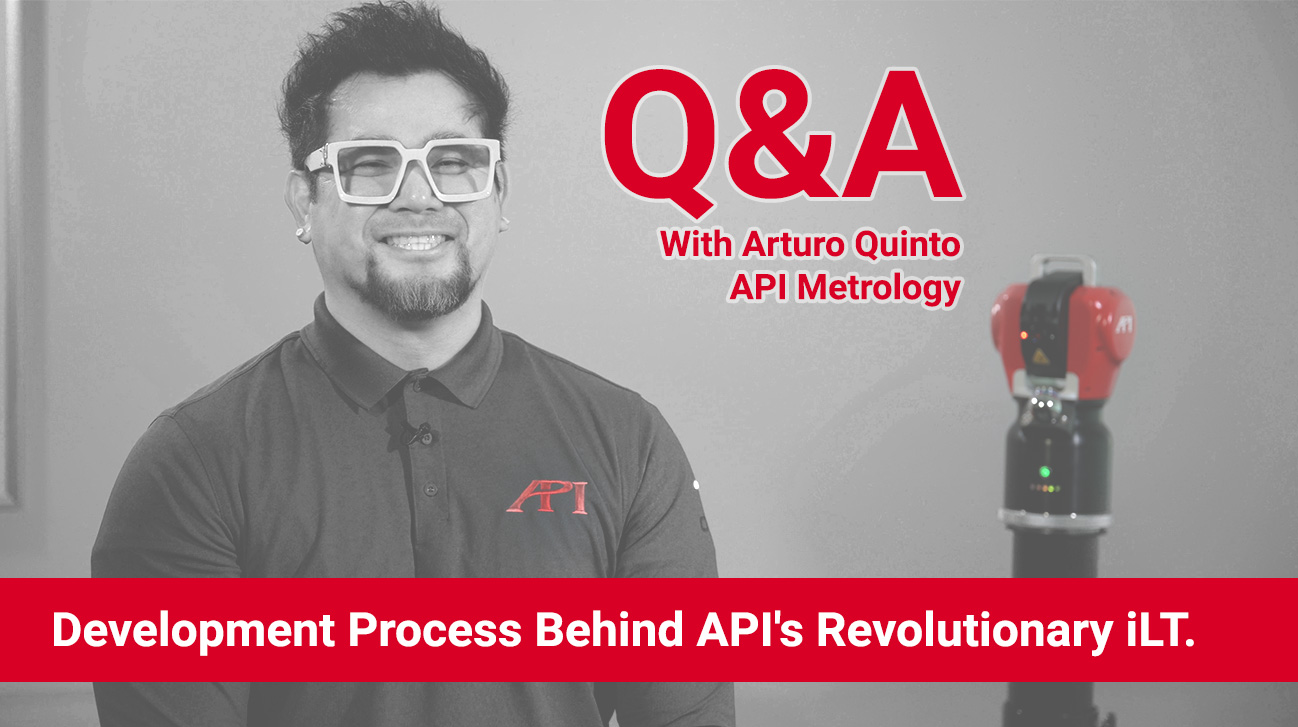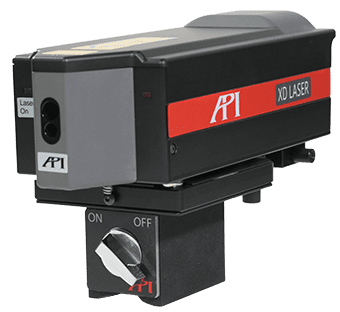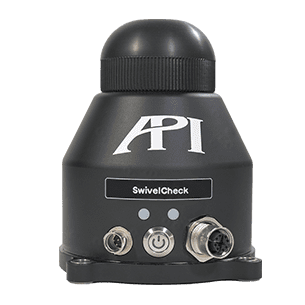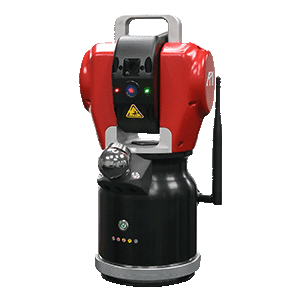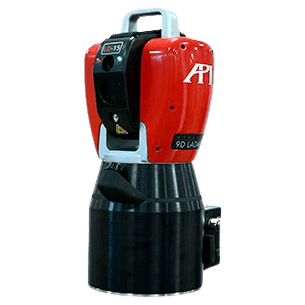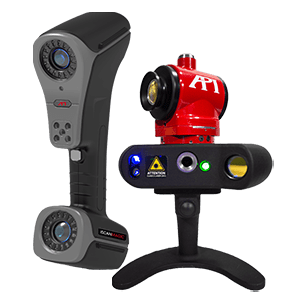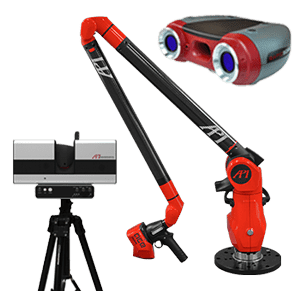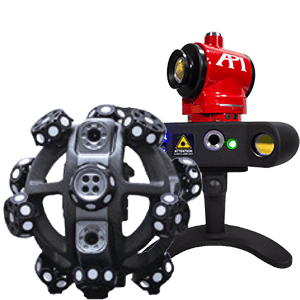In this informative Q&A, Arturo provides a fascinating look into the rigorous development process behind API’s revolutionary Integrated Laser Tracker (iLT). He sheds light on the engineering challenges his team faced, notably the task of significantly downsizing the device without sacrificing its renowned accuracy and functionality. Arturo highlights the meticulous calibration process and how cutting-edge electronics and software innovations played pivotal roles in the successful creation of this compact, yet powerful laser tracker.
As Arturo explains, the iLT represents a substantial advancement over previous models, incorporating features like improved portability, wireless operation, and enhanced battery life, all designed to meet the practical demands of industries such as shipbuilding, construction and robotic calibration. With these insights, you’ll gain a deeper understanding of how API is setting new standards in precision metrology with the iLT. To discover more about Arturo’s insights and the remarkable innovations behind the iLT, we encourage you to watch the complete video.
Watch The Compressed Version of the Q&A
The following is the full interview text from API CO Joe Bioty. The Video is an edited version of this Q&A.
The Full Uncut Q&A about the Development of the iLT.
Q&A with Arturo Quinto: How API Developed iLT as the Most Portable Laser Tracker Ever Made
Can you walk us through the development process of the iLT? What were the biggest engineering challenges?
The development process of this product was really motivated by the market, what’s the need in the market industry. API’s obligation is to deliver portability from our Laser Trackers, which we’ve always done. I think, we’re number one in delivering that portability with our Laser Trackers to the market and still maintaining the accuracy that our Laser Tracker need to perform the task.
So, during the development process, that was the motivation — to deliver a portable, accurate, and much more robust Laser Tracker in the industry.
There have been a lot of challenges because now we’re trying to package a very complicated, complex piece of equipment at a much smaller size. As you can see behind me, compared to our existing tracker, iLT is probably 50% smaller than and weighs probably even less than half of our existing Laser Tracker equipment.
So, the development process started, I would say, maybe five, six years ago because of the motivation in the market.
Pricing also put a lot into that. There’s a lot of challenges in the market, and we felt like we needed to downsize our equipment to save on production costs, but at the same time still keeps that accuracy and portability especially to achieve our target applications in the service industry of the metrology market.
So that was really the development process and motivation of our ILT system.
The main challenge was really downsizing the equipment.
As you know, the Laser Tracker has a lot of components involved with it. Generally, we have the optics, the mechanics, the encoders. And also, obviously, the PCBs, which entail the electrical system.
So, there’s definitely challenges there. But because of API’s experience in Laser Trackers, our talents and engineers here, we worked our best to find a solution, to package the system with a much more compact design and better technology that is, in fact, much smaller.
As you know, technology nowadays is moving towards more compact systems which can also deliver the same or if not better than the previous models. So that’s what we did with the iLT.
That’s really the biggest challenge is to package the system much smaller. The technology is the same, the principle is the same, but having the system to pack it a much more compact system was a bit of a challenge to us.
The iLT is half the size and weight of traditional laser trackers. How did the team manage to achieve this without compromising accuracy or functionality?
It really goes down to the calibration of the system, making the system work all together in unison, between the encoders, between the optics, which is your laser beam and ADM, and, at the same time, your electronics.
Electronics plays a big role in this product because now we can find other sources to pack the system with much smaller PCBs, but much more powerful and much more intelligent PCBs that we can work with in the future.
We can even add AI in there. That’s a direction that we’re looking into to upgrade this system.
So, the calibration is ultimately the heart and soul of the Laser Tracker. How we can calibrate this system to be very accurate piece of measurement equipment.
So, it’s all there working together with all the hardware and electronics and all the vision system too.
On top of that, it’s also battery operated, which is much more important when it comes to the portability of the system.
What are the key technical advancements that make the iLT a game-changer?
I think the internals, when we have upgraded the electronics and the camera system, that’s going to be a game changer, on top of, of course, the accuracy the smaller system can achieve.
Sometimes you think about it, if you’re a Laser Tracker user, it’s mind-blowing to see a system this small. If you’ve saw a Laser Tracker 30 years ago, it’s almost mind-blowing that it could achieve this kind of accuracy.
It is the electronics because a lot of it has something to do now with software, how you manipulate the software and make it easier for the user moving forward, integrated in a software and adding more artificial intelligence in these systems.
And it’s very capable of what it is now. We’re not only looking at the system to design what we’re going to release here, but also, we’re looking at the future of what it can do.
Battery life, portability, and wireless operation are major selling points—can you elaborate on how these features benefit users in real-world applications?
So, just for example, in shipbuilding, a lot of the regulations lead towards health and safety of the users. Now that we have our ILT, much smaller, more portable, and battery operated, now the operators at shipyards can easily transport this from one level to the other inside some crevices.
And that plays a big role in having equipment off the ground and bringing it to where the job needs to be done. So, that’s really the biggest thing about our iLT system that will lead to a much more productive industry, especially in ship building.
As the industry evolves, how do you see the iLT setting new standards for portability and performance in metrology?
Yeah, I think we’re setting a bar here as far as Laser Trackers overall. As you noticed, we’ve mentioned a lot about the size and portability of the system, but still maintaining the accuracy of the Laser Tracker.
There’s a lot of need in the field as far as the portability of the system because now there’s a lot of innovations in the industry taking place. For example, construction robotics is one.
There’s a lot of need for this portability because now people want to really have this behind their back in their backpack to do some measurements at a high accuracy level.
And I think this is very important for the iLT to deliver, to make sure that even though it’s small and light, it still can achieve the accuracy that the industry needs.
How does the iLT compare to previous API laser trackers in terms of usability and efficiency?
Compared to the previous Laser Tracker, the Radian, the iLT actually excels in the new software development kit that we have delivered.
Now we’re unifying our software development kits for all the Laser Trackers, including the iLTs and the previous Radian models.
With this move, I think the integration for third-party softwares in managing all our SDKs is so much more straightforward and seamless, and that’s one of the things that we look forward to working with a third-party software or even our own API MeasurePro software, that we can offer to customers.
That’s really what makes the iLT different, and it gives us more opportunities in the future to have this system better integrated in the third-party software that a lot of our operators use in the field.
How does the iLT compare to previous API laser trackers in terms of usability and efficiency?
The whole idea for iLT is not only selling this standalone, but a lot of it also entails automation solutions that pair with all our existing API products, including the LADAR system, which is our laser scanning system and all our other Radian accessory systems.
This is not only a standalone solution, but also ultimately a fully automated solution, including hardware and software moving forward in the industry.
A lot of the big industries now are looking for automated solutions and trying to remove the user intervention to be able to achieve those jobs or measurements, and iLT is there to deliver and will help that.
What was the most rewarding part of bringing this product to market?
This iLT, actually, believe it or not, I think it’s a big market disruptor, which I’m very excited about. It will change the Laser Tracker world as far as how it’s used in the field because of its portability.
Especially now there’s a lot of service companies out there that could support different projects and they want that portability, the ability to get on a plane, have the system with them, get on the job, measure.
And if you talk about 20 years ago, that’s a really big challenge. Or even 10 years ago, that’s a really big challenge. But now we have the portability of iLT and to have it on their back and do a job that will support the customers.
There’s been really good feedback when we got this pre-production release showing, you know during the trade shows at CMSC and IMTS and there was great feedback that we got for iLT.
What do you want potential customers to know about the iLT that they might not realize at first glance?
I think for iLT, it’s kind of deceiving because it’s such a small equipment, you would think it’s bare bones, just laser measurement, but really on top of our, our existing Radian models, this is a much more powerful device as far as the computations of artificial intelligence. And it’s really a much more robust system, more updated internals, when it comes to PCBs, a much more robust optical design, and an onboard vision camera, which gives you a lot more flexibility for in the field measurements.
So, I think that’s ultimately what will surprise our users, how easy to use this equipment is in a much more seamless and portable device in the field.



